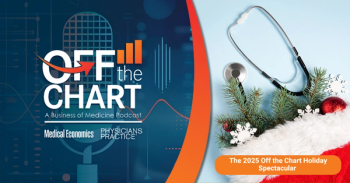
Explaining the impending Medicare payment cuts
The Medicare cuts are deeper than advertised.
The Centers for Medicare and Medicaid Services (“CMS”) has proposed to reduce the Medicare conversion factor by 4.42% for 2023. Also proposed is an additional 4.0% statutory cut (Google “PAYGO Sequester” to learn more) to keep the Federal Budget in check. I’ve done the math and checked it twice, and that’s an aggregate 8.42% cut to Medicare payments. Yikes!
What you need to do
Before I get into the ramifications of such a cut, each of you do the following:
- Ask every doctor and employee to e-mail their United States Senators and Representative(s) to voice their opposition to the proposed Medicare and PAYGO cuts. MGMA, AMA, and other professional associations make this process very easy.
- If there’s less money coming in, there’s less money for staff raises and benefits; they have a vested interest in this issue.
- Ask every doctor and employee to e-mail their State senator(s) and Representative(s)/Delegate(s) and let them know Medicare cuts may impact patient access.
- If there’s less money coming in at a time when expenses are climbing, some medical practices will consider seeing fewer Medicaid/underinsured/uninsured patients and more commercially insured patients. State politicians should worry about the downstream impact of an upstream income reduction.
Political leanings, lack of time, or any other reason for not doing it is unacceptable. Any doctor or employee who doesn’t do these two things for the practice and its patients deserves a 8.42% pay cut.
Ramifications
Advertisement
First, Medicaid plans and some commercial payers may follow Medicare’s suit and cut fees. That’s yet another reason to do what I asked above. Have your manager or revenue cycle person review your payer agreements to see if payments are based on the Medicare fee schedule.
Next, understand the three basic scenarios these proposed cuts pose:
- Expenses must be reduced to offset these payment cuts; or
- Revenues must go up enough to offset these payment cuts; or
- Partner income will go down.
Cutting expenses is a deliberate and often difficult process.It takes time. It matters, especially given the leaps in employee wages that many practices have faced. And a dollar saved is worth a lot more than a dollar billed.
If you bill $100, how much of it hits the bottom-line? Contractual adjustments might take away 40%, leaving you with $60. So, you take home $60? Wrong. We have to factor in overhead of, let’s say 50%, and that reduces that $60 down to $30. Your dollar billed is worth thirty cents.
But if you save $100, there are no contractual adjustments or overhead offsets; it all goes to the partners. A dollar save is worth a dollar.
Take my advice, and spend an evening looking at where expenses can be trimmed. Understand some expenses will impact patient care, be it in less appointment availability, longer hold times, or perhaps less care for those who need it most. And understand politicians must be educated on the impact of the decisions they make to the constituents (i.e., patients) they serve.
Increasing revenues requires either working smarter, working harder, or thinking smarter. I will devote future articles to options for increasing revenues. For now, consider a coding audit to ensure no clinician is leaving (your) money on the table by miscoding or undercoding. There are folks like me who can do basic E&M coding audits. However, you should consider having a certified professional coder do a deep dive if your clinicians haven’t been trained/audited in a while.
Also, consider a revenue cycle audit; please. You really need to make sure your practice is doing revenue cycle right. I gave my old practice all I had to give in ’20 and ’21, but in retrospect it wasn’t enough. I would have benefited – and the practice would have benefited – by having an extra set of hands audit our processes for gaps.
As I have mentioned in previous articles, hypertargeting has proven to be an excellent strategy for gastroenterology, obstetrics, and other specialties to generate incremental revenues from new commercially insured patients. Survey your specialty and learn where other practices are increasing revenues via service line expansion or new patient generation.
Advanced practice professionals (APPs, e.g., nurse practitioners or physician assistants) can improve your bottom line or your work-life balance. Rare is the physician who accomplishes both goals, so monitor both their production and yours. APPs are increasingly expensive, so the math won’t work if your APP does more and you do less…unless work-life balance is your goal.
Taking home less W-2 income will happen if the partners do not cut expenses or increase revenues. The math doesn’t lie.
Summary
I have been fighting proposed Medicare cuts for years and don’t remember ones of this magnitude. It’s time for every physician and every employee in every practice to be heard.
What if we succeed partially and get a 4.0 % cut rather than an 8.42% cut?Your three scenarios remain: cut expenses, increase revenues, or take home less. Use the next three months to identify and enact expense reductions or revenue increases. Those who wait already know what will happen. Don’t let that happen.
Lucien W. Roberts, III, MHA, FACMPE, retired in February 2022 from full-time practice leadership after a sustained battle with Long COVID.He spent the majority of his career in gastroenterology and neurology. In semi-retirement, he spends time as co-owner of a freestanding infusion center and as an occasional writer. Lucien may be reached at [email protected] and is appreciative of any feedback readers may offer.
Newsletter
Stay informed and empowered with Medical Economics enewsletter, delivering expert insights, financial strategies, practice management tips and technology trends — tailored for today’s physicians.








